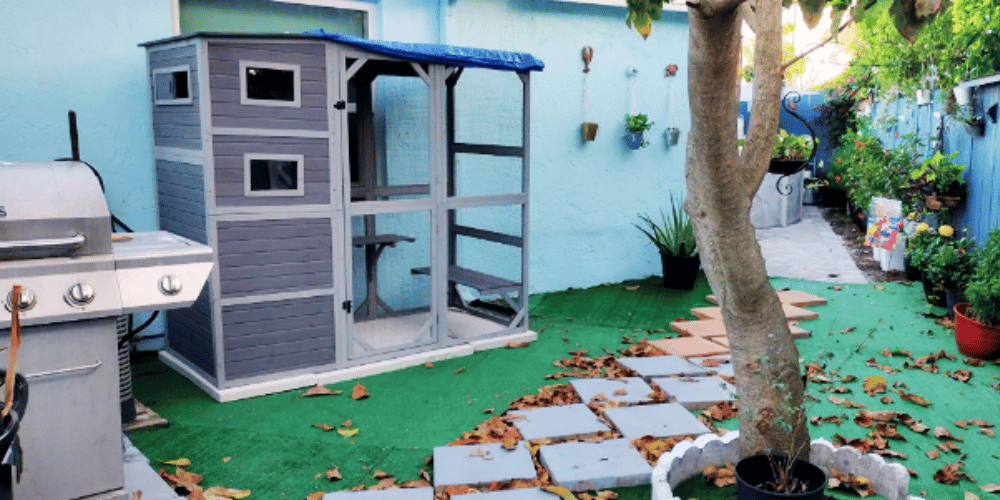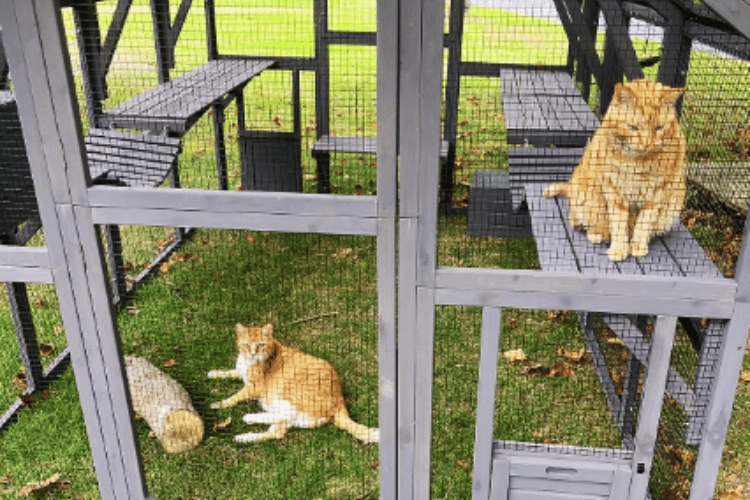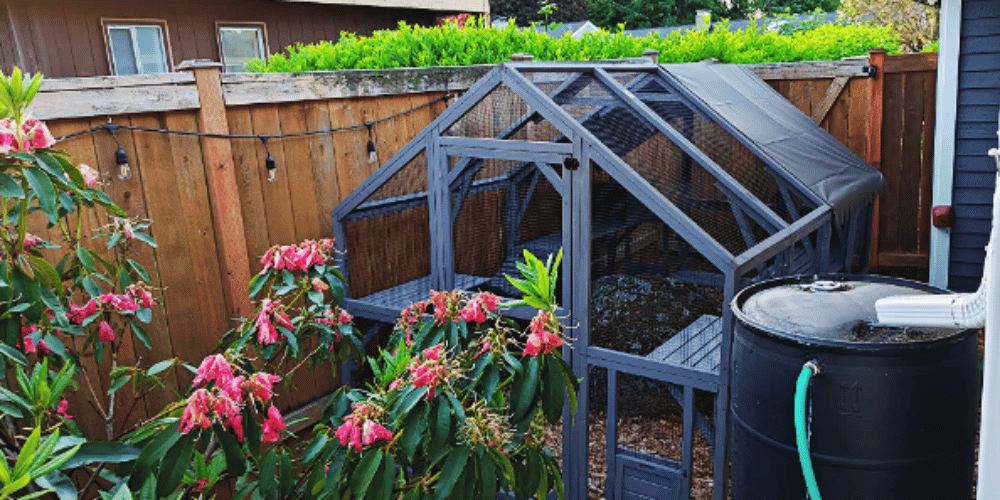Are you a cat lover looking for the perfect outdoor enclosure for your feline friend? Then you know how important it is to consider materials and quality when making your choice. Wood is often considered one of the best materials for an outdoor cat enclosure, but choosing the right type of wood can be daunting.
In this article, we'll break down exactly what features make certain types of wood better than others so that you can make an informed decision on which type works best for your needs and budget. Read on to learn more about the ideal wood kinds suitable for an outdoor cat enclosure!

Choosing the Best Wood for Your Outdoor Cat Enclosure
For cat owners, building an outdoor enclosure is a great way to give your felines a safe and stimulating place to play and explore. But when it comes to materials, it's important to choose carefully, as not all woods are created equal.
In this section, we'll explore the best woods for an outdoor cat enclosure, helping you make an informed decision for your furry friends.
Cedar
Cedar is a popular choice for outdoor enclosures because it is resistant to rot, decay, and insects. It also has a pleasant scent that helps discourage insects, making it a natural pest repellent.
Cedar is a durable, strong, and lightweight wood that is easy to work with, making it a great option for a DIY cat enclosure.
Pressure-Treated Pine
Pressure-treated pine is another wood that is resistant to rot and insects. Its treatment process involves infusing the wood with chemicals, creating a barrier against pests and decay.
This type of wood is a more affordable option than cedar, making it a popular choice for cat owners on a budget.
Redwood
Redwood is a beautiful and durable wood that is naturally resistant to decay and insects.
It is lightweight, easy to work with, and has a unique and striking appearance due to its reddish-brown color. While redwood can be more expensive than other types of wood, it is a great investment due to its longevity and durability.
Plywood
Plywood is a man-made wood product that is composed of thin sheets of wood that have been glued together. While it is not naturally resistant to decay and insects like the other options listed above, it can be treated with a sealant or paint to make it suitable for outdoor use.
Plywood is an affordable and widely available option that can be used to create a sturdy and functional outdoor cat enclosure.

When it comes to choosing the best wood for your outdoor cat enclosure, there are a multitude of options. Cedar, pressure-treated pine, redwood, and plywood are all viable choices depending on your needs and budget.
Whichever option you choose, make sure to properly weatherproof and seal it to ensure your cat enclosure will stand the test of time. With the right materials and a little bit of elbow grease, you can provide your furry friends with a safe and stimulating outdoor space to call their own.
FAQs: Choosing the Ideal Wood for Building an Outdoor Cat Enclosure
Are you a cat parent searching for the best wood to use when building an outdoor enclosure? We know it can be tricky finding materials that are both sturdy and safe for cats, so we’ve put together the ultimate guide on what wood is best.
In this section, we answer all your questions - from what type of wood is most durable to how to make sure your pet stays properly protected outdoors.
Don’t worry about making any mistakes; no matter what kind of project you undertake, this FAQ section has got you covered! Keep reading for more information on creating a secure and comfortable outdoor space for your furry friend.
What type of wood is best for building an outdoor cat enclosure?
When it comes to outdoor cat enclosures, durability and resistance to weather elements are crucial factors. Cedar and pressure-treated pine are two popular choices due to their natural resistance to rot, decay, and insect damage. Both types of wood are known for their longevity, making them ideal for outdoor structures.
Why is cedar a good choice for an outdoor cat enclosure?
Cedar is an excellent option for an outdoor cat enclosure due to its natural durability and resistance to decay and rot. It contains natural oils that act as a deterrent to insects, including fleas and ticks, which can be harmful to cats. Additionally, cedar has a pleasant aroma that can help repel pests and provide a soothing environment for your feline friends.
What about pressure-treated pine? Is it safe for cats?
Pressure-treated pine is another viable option for an outdoor cat enclosure. The treatment process involves infusing the wood with chemicals, such as copper compounds, to increase its resistance to decay and insect damage. While pressure-treated pine is generally safe for cats, it's essential to use newer versions of this wood that are free from harmful chemicals like arsenic, which was used in older treatments. Look for ACQ (Alkaline Copper Quaternary)-treated pine, as it is considered safe for use around animals.
Are there any safety concerns when using wood for outdoor cat enclosures?
Safety is paramount when building an outdoor cat enclosure. Avoid using woods treated with toxic substances, such as chromated copper arsenate (CCA), as they can be harmful to cats if ingested. Ensure that the wood is smooth and free from splinters or rough edges to prevent potential injury to your cats. Regular maintenance, such as sanding and resealing, is necessary to keep the wood in good condition and avoid any hazards.
What about sustainability? Are there environmentally friendly options?
If sustainability is a priority, consider using reclaimed or recycled wood for your outdoor cat enclosure. This not only reduces waste but also gives new life to old materials. Look for certified sustainably sourced wood, such as Forest Stewardship Council (FSC) certified wood, which ensures responsible forestry practices. Another eco-friendly option is composite wood made from recycled materials, which offers durability and longevity without contributing to deforestation.
We hope this article has helped you explore the best wood to use for your cat's outdoor enclosure. An important takeaway here is that the wood used should be durable enough to handle harsh weather conditions, rot-resistant, and bug-proof to keep your beloved pet safe inside their enclosure.

Additionally, depending on where you live, you may want to consider additional insulation options so that your kitty can stay warm when temperatures get too cold. With a little bit of research and planning, you'll be able to build a functional and cozy outdoor space where your cat can stretch their legs and enjoy the outdoors without worrying about possible dangers lurking around them. So, what are you waiting for?
Go ahead—build an impressive shelter for your feline friend and keep them comfortable in the cold months!
Thank you for visiting LegitLists we hope this helps you make a legitimate choice!






